Two Hundred MiGs
The story about the atom will have to start from afar! With the MiG-1, which before the launch of the series was called the I-200. This machine began to be created in the depths of the OKN NN. Polikarpov.
MiG-1
On the I-200 decided to put the AM-35A liquid-cooled engine 1400 hp, which would provide 640 km / h speed and the ceiling to 13 thousand m, the armament consisted of a machine gun with 12,7 mm caliber on the engine and two 7,62-mm in the wings . Until October, 1940 was worked on by engineer P.I. Andrianov.
And-200
At that time, the Aviahim Moscow Aviation Plant was preparing for the production of the 200. To do this, Polikarpov organized a special group headed by the graduate of the Air Force Academy A.I. Mikoyan. It also included a talented aircraft engineer M.I. Gurevich,
5 April 1940 Test Pilot A.N. Ekatov raised the 200 into the air, and soon reached 648 km / h and an altitude of 12 thousand, but a crash occurred on the last flight. Nevertheless, in December, the fighter was renamed Mig-1 in honor of Mikoyan and Gurevich, and in January 1941 began building a series of found machines, But the customers wanted to increase the armament and increase the flight range from 730 to 1250 km. The weight of the modified aircraft, known as the MiG-3, increased from 2968 to 3350 kg, which degraded the characteristics of the car, which was already considered “strict”. But as the war began, it turned out that at altitudes to 5 thousand meters, where the air battles were mostly fought, the MiG-3 was inferior to the enemy aircraft. They were going to equip it with AM-38 engines in the 1600 HP, but those were required for the Il-2 attack aircraft, and in December 1941, the production of "MiGs" was stopped, transferring the 3322 fighter to the troops.
But Mikoyan and Gurevich were sure that their plane was written off early and at the end of the same year they built five I-210 fighters. He was created under the air-cooled engine M-82A with power 1600 HP, armed with three synchronized machine guns At the BS caliber 12,7 mm. On tests in 1942. reached only 565 km / h and heights of about 9 thousand m, a wide "forehead" of the engine affected. They did not redo the aircraft and took up the I-211 (E).
And-211
It was equipped with an 14-cylinder air-cooled engine ASH-82F with a power of 1700 hp, and a ShVAK gun synchronized with the propeller rotation was installed in the center section. B1944. Two I-211 successfully passed factory tests. They developed speeds up to 670 km / h, climbed 11,3 thousand. Meters and overcame 1140 km. But in the regiments were already La-5 with the same power plant and similar weapons, also made from non-deficient materials.
Mikoyan and Gurevich stopped experimenting with air-cooled engines and in 1942 they released an 220 (L, MiG-11) with a length of 9,5 m, with a wing span of 20,3 and m2. Armament has become more powerful - four ShVAK.
And-220
The first I-220 from January 1944 flew with the AM-38F engine, which was then replaced with AM-39, the speed was 633 km / h, the flight altitude - 9,5 thousand m, and its range 730 km. The second copy of the AM-39 in the summer of that year accelerated to 697 km / h. But for 220, the state tests did not go further.
The next was an 221 (2A, MiG-7) take-off weight of 3883 kg with a wing span of 13 m. On it, a used AM-38А was used, equipped with two TK-2B turbochargers, with which the aircraft developed 689 km / h. However, in December 1943, the plane crashed and was not restored.
M-221 (MiG-7)
In 1944, the I-222 high-altitude fighter-interceptor (ZA, MiG-7) was released with an airtight, ventilated cockpit for flying at high altitudes. She was supplied with bulletproof and armored sparks. The AM-39B-1 engine with a TK-ZOOB turbocharger that developed the 1860 HP rotated the 4-bladed propeller, the water and oil radiators were in the wing, two ShnAk 20 mm guns were used to defeat the enemy.
Mikoyan and Gurevich stubbornly continued to improve the car. So, in the same 1944, an I-224 (4А, MiG-11) was manufactured with the same, but accelerated powerplant and similar weapons, calculated on the flight range 1400 km. This fighter passed only factory tests ...
It was followed by an I-3012 (225А) fighter with an AM-5B engine and a TK-ZOOB turbocharger, which developed 42-1750 hp, with a wing span of 2000 m20,3, four ShVAK, which was lightweight to 2 kg. The estimated range of the flight was to be 1300 km, and the height of 12,6 thousand meters. 21 July fighter broke away from the runway. However, an accident occurred in August. After it, the tests did not continue.
And-225
In 1943-1944 The first serial fighter jets, the English Vampire and Meteor, the German Me-163, Me-262, Xe-162, appeared on the fronts of the Second World War; in the USA, Aircomet prepared the P-59.
Our aircraft designers and engines were late, so we had to start with combined units. In 1944, A.S. Yakovlev equipped the Yak-3 fighter stationed in the rear fuselage with a liquid-jet RD-1, and the speed of the Yak-ZRD increased from 740 to 780 km / h.
And-250
In February 1945, A.I. Mikoyan and M.I. Gurevich, only they designed the experimental all-metal fighter I-25O (aircraft K), equipping it with piston and air-jet engines with a total capacity of 2200 hp and armed with three G-20 cannons of 20 mm caliber. This car made its first flight on March 3, 1945. Later it was able to develop a speed of 820 km / h, reach an altitude of 12 thousand meters and fly 1380 km. This satisfied the military, and the fighter took to arsenal aviation Baltic and Northern Fleets.
Behind him, in 1946, a purely reactive I-300 (F) was rolled out to the test airfield, and after setting into service, he changed his name to MiG-9 ...
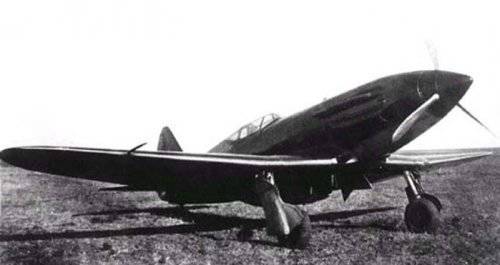
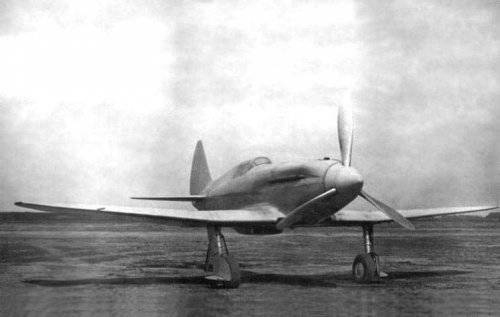
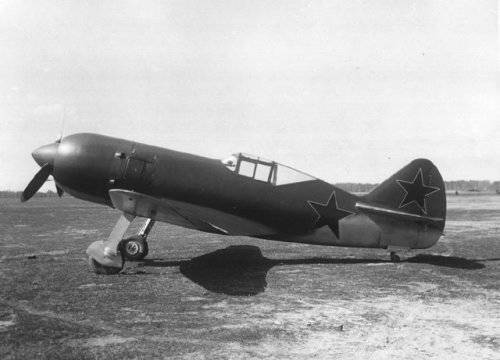
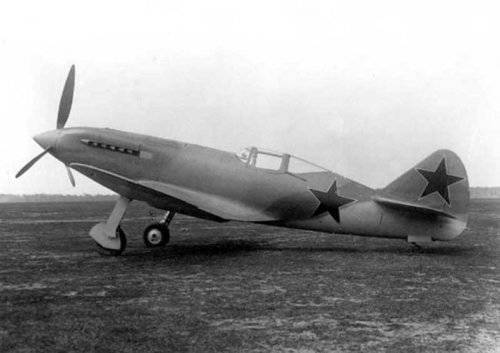
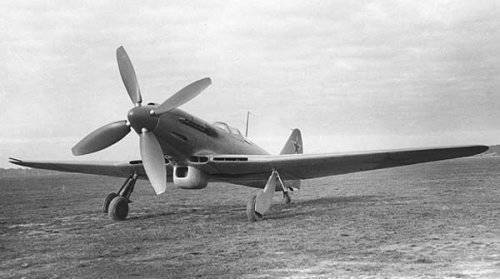
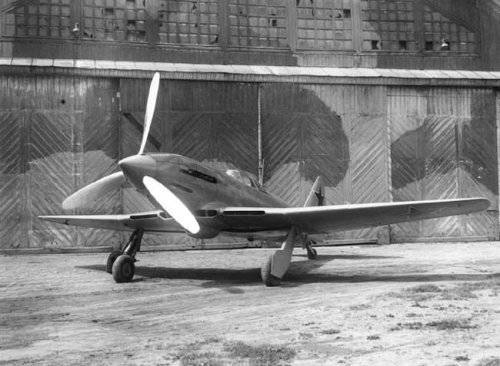
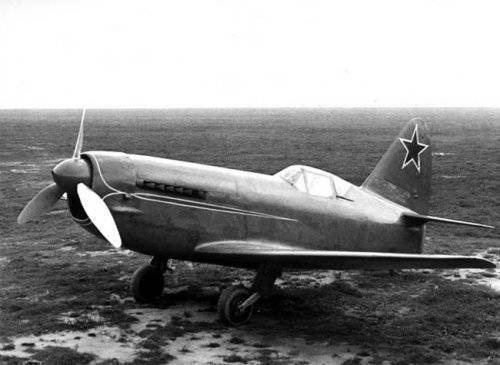
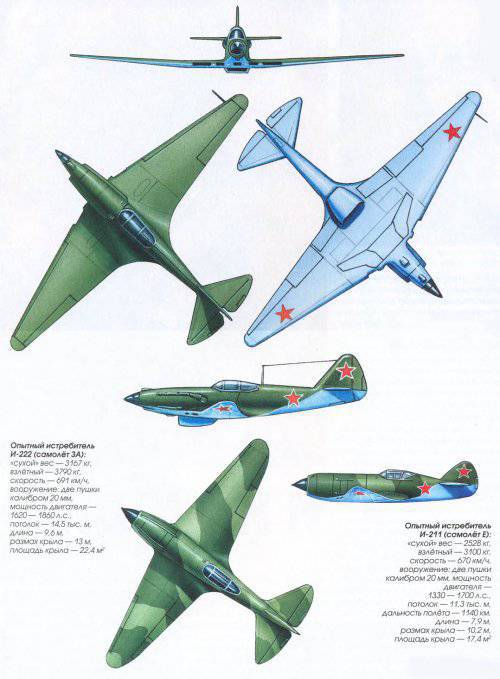
Information